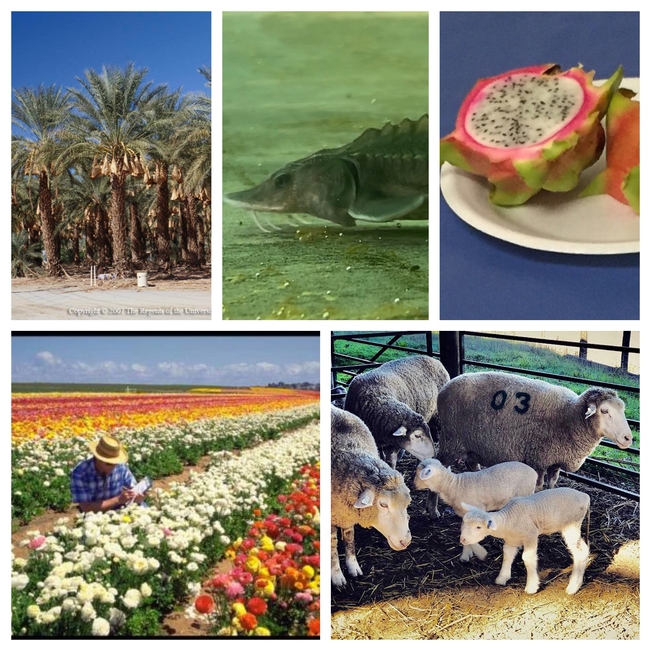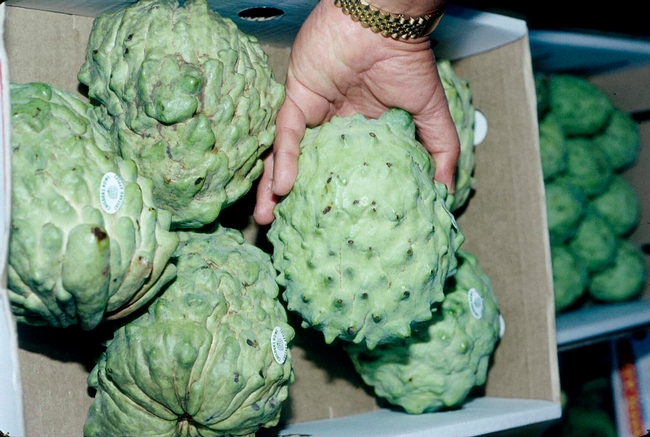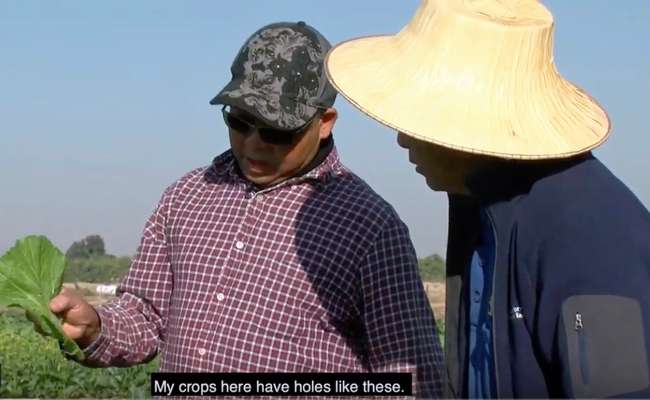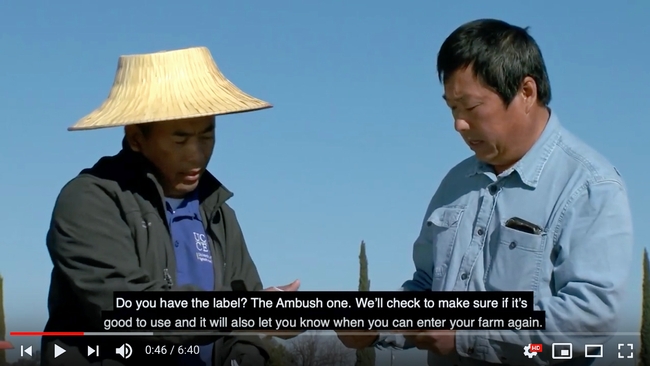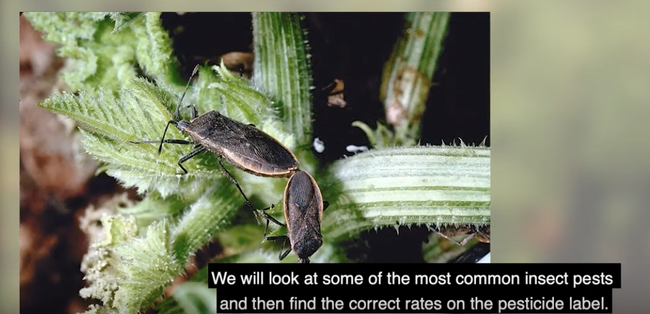Posts Tagged: Ruth Dahlquist-Willard
More California farmers eligible for USDA Coronavirus Food Assistance Program funds
UC ANR experts available to comment
California farmers stand to benefit from the addition of more commodities now covered by the USDA Coronavirus Food Assistance Program, say UC Agriculture and Natural Resources experts. Yesterday (Aug. 11) the U.S. Department of Agriculture expanded eligibility and extended the deadline to apply to Sept 11.
Farmers of aquaculture, nursery crops and flowers, sheep and specialty crops such as dates, dragon fruit, nectarines, pomegranates, pumpkins and many other specialty crops grown in California are now eligible for financial assistance to help keep their operations afloat during the business disruption caused by the pandemic.
Below are UC Cooperative Extension advisors and specialists who are available for comment:
Daniel Macon, UC Cooperative Extension livestock and natural resources advisor serving Placer, Nevada, Sutter and Yuba counties, dmacon@ucanr.edu
“Including all sheep will be HUGE for California producers. Most California lambs are born in the fall and marketed in the late spring. The rest of the West has lambs born in the spring and marketed in the fall/winter/early spring. The original CFAP payments provided a maximum payout to lambs that would have been marketed earlier than most California lambs. And provided no payment for what we call running-age ewes (breeding animals).”
Jackson Gross, UC Cooperative Extension aquaculture specialist at UC Davis, jagross@ucdavis.edu
“This is a big distinction for our California freshwater fish producers. While it doesn't cover all of the diversity in California aquaculture, it does cover the majority of our industry as far as freshwater fish producers. A specialty crop distinction is important for our fish farmers, making them eligible for specialty crop funding and numerous other federal and state programs that were previously inaccessible.”
Cheryl Wilen, director of UC Cooperative Extension in San Diego County, cawilen@ucanr.edu
“It is my impression that ornamental nurseries will really have a good opportunity to recover money for unsold crops.”
Ruth Dahlquist-Willard, UC Cooperative Extension small farms and specialty crops farm advisor for Fresno and Tulare counties, rdwillard@ucanr.edu
"The addition of crops such as bok choy, daikon, winter melon, and turmeric expands the program to include more of the specialty produce grown on small-scale Southeast Asian farms in the Central Valley. However, highly diversified farms may find it difficult to apply for small acreages of multiple crops, and with USDA offices operating remotely, additional technical assistance is needed to support farmers with the application process."
Ramiro Lobo, UC Cooperative Extension small farms and agricultural economics advisor in San Diego County, relobo@ucanr.edu
“The specific mention of minor crops can be significant for small-scale growers in the state, and Southern California in particular for growers of crops like dragon fruit, and other minor subtropicals because it legitimizes them as commercial crops.”
Aparna Gazula, UC Cooperative Extension small farms and specialty crops farm advisor for Santa Clara, San Benito, and Santa Cruz counties, agazula@ucanr.edu
“It's great that the USDA Coronavirus Food Assistance Program has been expanded to include more minor crops. I hope the USDA offices have bilingual staff who can work with socially disadvantaged farmers with language barriers that often grow these crops.”
Aliasghar Montazar, UC Cooperative Extension irrigation and water management advisor in Imperial and Riverside counties, amontazar@ucanr.edu
“Maintaining date palms over the season is very labor oriented. During February to May, a lot of activities need to be conducted at a certain time. As you know, we had high pressure from the pandemic in the Coachella Valley during these months. It made labor less available, which created some challenges for growers.”
Mae Culumber, UC Cooperative Extension nut crop advisor in Fresno County, cmculumber@ucanr.edu
“Almonds, pistachios and walnuts commodities all suffered a price decline between mid-January and mid-April as a result of the COVID-19 pandemic. Thirty to 50 percent of the previous season's crop is normally marketed during this time of the year. The CFAP program will provide financial relief for losses due to price decline and spoiled shipments that lost a marketing channel due to the pandemic. Commodity boards are working with the Farm Service Agency to assist producers in applying for the program.”
Hmong-language pesticide safety videos now online
DPR, Fresno State and UCCE create pesticide safety videos with Hmong farmers
A series of videos describing California pesticide rules and safety in Hmong is now available to view for free online. The videos were produced by California State University, Fresno and UC Cooperative Extension in Fresno County with funding from the California Department of Pesticide Regulation.
The nine-part video series – Complying with Pesticide Laws and Regulations in California – is part of DPR's mission to reach California's farming communities. The videos cover a number of topics including using personal protective equipment, understanding pesticide product labels and application permit requirements.
The innovative educational tool blends peer-to-peer communication with traditional extension methods to include the knowledge and experience of both farmers and extension experts. Hmong farmers featured in the video helped develop scenes in which they educate other farmers, purchase and use personal protective equipment, and interact with extension staff.
“We worked with Hmong farmers who are following pesticide regulations themselves, and are now giving back to educate their peers,” said Ruth Dahlquist-Willard, UC Cooperative Extension small farm advisor, who collaborated on the video production. “Their voices and expertise helped make the scenarios more realistic and accessible to other farmers in the Southeast Asian community.”
Michael Yang, longtime UC Cooperative Extension small farms and specialty crops agricultural assistant, stars in the videos, interacting with farmers based on his extensive experience and trusted relationships in the Hmong farming community, and narrating the educational content in Hmong.
“We hope the videos broaden the reach of our local extension programming to help more farmers understand pesticide regulations and avoid fines, as well as improve their safe handling, selection and use,” said Yang.
Dahlquist-Willard and Yang plan to show the videos at UC Cooperative Extension meetings with Hmong farmers and distribute copies on flashdrives to county Agricultural Commissioner's offices in Fresno County and beyond. The videos are captioned in English.
“DPR works with all types of farmers on pesticide issues and it's critical that they use these tools safely – regardless of the language they speak,” explained DPR Director Val Dolcini. “This video project, the first of its kind to use Hmong speakers, will help foster safer use of pesticides.”
The videos can be viewed at http://bit.ly/fs-dpr-hmong-pesticide-video. The modules in the series cover:
- Introduction to California Pesticide Laws
- Checking for Crops Registered on the Label
- Pests and Application Rates on the Label
- Understanding Signal Words
- Following the Restricted Entry Interval (REI)
- Following the Pre-harvest Interval (PHI)
- Knowing Common Restrictions on the Label
- Using Personal Protective Equipment (PPE)
- Pesticide Permits and Reporting requirements
The project took 700 hours over 18 months to complete, including filming and post-production. Twelve Fresno State students were also involved in producing the videos with the Hmong farmers in Fresno County. Dahlquist-Willard and Yang provided the creative direction in partnership with the farmers involved, and Fresno State's MCJ Multimedia Production Service under Professor Candace Egan brought professional video production and editing skills to make a high-quality finished product. Fresno State student video editor Mali Lee, a fluent Hmong speaker, completed the final edits of the Hmong language material.
“This was one of the most rewarding projects I have ever worked on,” said project director Bill Erysian of Fresno State. “We brought together a unique group of agricultural specialists, students, farmers and video professionals to create a high impact, professional set of educational videos on pesticide compliance for our Hmong farmers here in California.”
DPR has comprehensive pesticide safety and outreach material available in Punjabi, Spanish and English at https://www.cdpr.ca.gov/docs/whs/worker_protection.htm.

